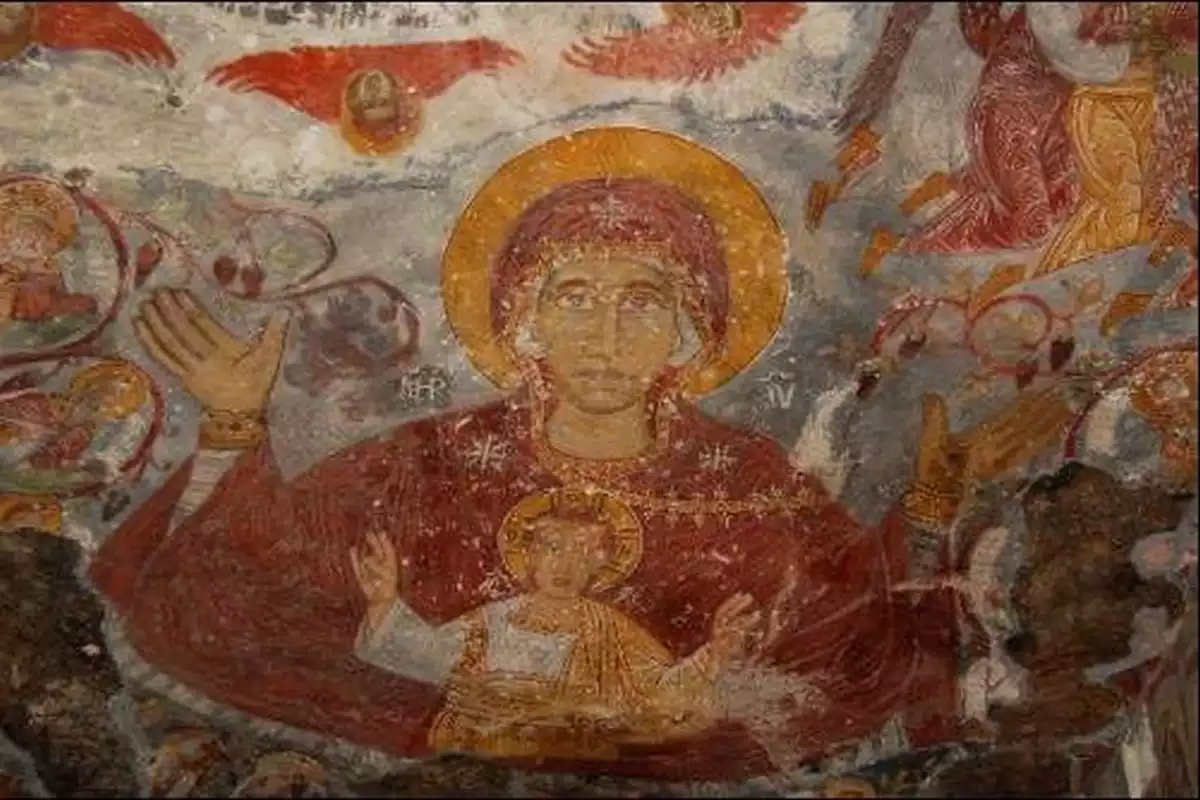
In the tapestry of Christian tradition, the Virgin Mary, often referred to as Panagia, a term derived from the Greek “Παναγία” which translates to “All-Holy,” occupies a position of profound reverence and importance. This exploration delves into the historical and theological aspects of this title, illuminating the depth of veneration afforded to Mary within the Christian faith. The epithet Panagia reflects her unparalleled sanctity in Christian consciousness, symbolizing her purity, grace, and pivotal role in the narrative of salvation.
Historical Context and Theological Significance
The title Panagia, an epithet signifying the utmost holiness, is intrinsically linked to the Virgin Mary’s role in Christian theology. This designation is not merely a testament to her purity but also a reflection of her integral part in the Christian narrative. From the early centuries of the Church, Mary’s veneration has been a cornerstone of Christian devotion, with the title Panagia being a pivotal expression of her revered status.
The origins of this title can be traced back to the early Christian communities, where Mary was regarded with exceptional honor. This reverence is rooted in her role as the mother of Jesus Christ, a position that placed her at the heart of the Christian story of salvation. Over time, the title Panagia became synonymous with the profound respect and devotion directed towards Mary, encapsulating her role as a figure of immaculate virtue and divine grace.
In theological discourse, the title Panagia is reflective of Mary’s unique status as theotokos, or God-bearer. This concept, central to Christian theology, underscores the belief in Jesus Christ’s divine and human natures. Mary, as the mother of Christ, is thus venerated not only for her purity and virtue but also for her pivotal role in the Incarnation. This theological significance is echoed in various Christian traditions and liturgies, where Mary is invoked as the All-Holy, a testament to her singular place in Christian devotion.
In addition to her theological significance, the veneration of Panagia has historical and cultural dimensions. Throughout centuries, devotion to the Virgin Mary has been expressed in numerous forms, including art, literature, and liturgical practices. This multifaceted devotion reflects the enduring impact of Mary’s role in Christian thought and the deep-seated reverence for her as Panagia.
In examining the title of Panagia, it becomes evident that it is more than a mere epithet. It is a symbol of Mary’s profound influence on Christian spirituality and theology. The reverence for the Virgin Mary as the All-Holy is a testament to her enduring legacy in Christian tradition, a legacy that continues to inspire devotion and reflection within the faith.
Cultural Impact and Devotional Practices
The title of Panagia, or the All-Holy, extends beyond theological boundaries, permeating various cultural and devotional practices within Christianity. Across different Christian denominations, the veneration of the Virgin Mary as Panagia is evident in numerous festivals, rituals, and artistic representations. These practices not only honor her but also offer insights into the diverse ways in which Christian communities express their devotion.
Iconography plays a significant role in the veneration of Panagia. Throughout Christian history, artists have endeavored to capture the essence of the All-Holy through various forms of religious art. These depictions, ranging from Byzantine icons to Western paintings, not only represent Mary’s physical image but also symbolize her spiritual significance. The portrayal of Mary in art has been instrumental in disseminating her image and the values she embodies across different cultures and epochs.
Marian devotions, such as the Rosary and the Angelus, also reflect the reverence for Mary as Panagia. These practices, often involving prayer and meditation, are central to many Christians’ spiritual lives. They serve as a reminder of Mary’s role in the Christian narrative and her intercessory power. Moreover, these devotions foster a personal and communal connection with the divine, underscoring the role of Mary as a mediator in Christian spirituality.
Festivals and liturgical celebrations dedicated to the Virgin Mary further illustrate her importance. Days such as the Feast of the Annunciation and the Assumption are not only commemorations of key events in Mary’s life but also opportunities for believers to reflect on her role as the All-Holy. These celebrations, varying in customs and traditions, highlight the universal appeal of Mary in the Christian faith.
The title Panagia encapsulates the profound reverence and veneration the Christian tradition holds for the Virgin Mary. From her theological significance as the Mother of God to her cultural impact across centuries, Mary’s role as the All-Holy is deeply entrenched in the Christian consciousness. Her enduring legacy continues to inspire and guide believers, serving as a beacon of faith, hope, and divine grace.
References
Brown, Raymond E. “Mary in the New Testament.” Fortress Press, 1978.
Hahn, Scott. “Hail, Holy Queen: The Mother of God in the Word of God.” Doubleday, 2001.
Pelikan, Jaroslav. “Mary Through the Centuries: Her Place in the History of Culture.” Yale University Press, 1996.
Warner, Marina. “Alone of All Her Sex: The Myth and Cult of the Virgin Mary.” Vintage Books, 1983.
